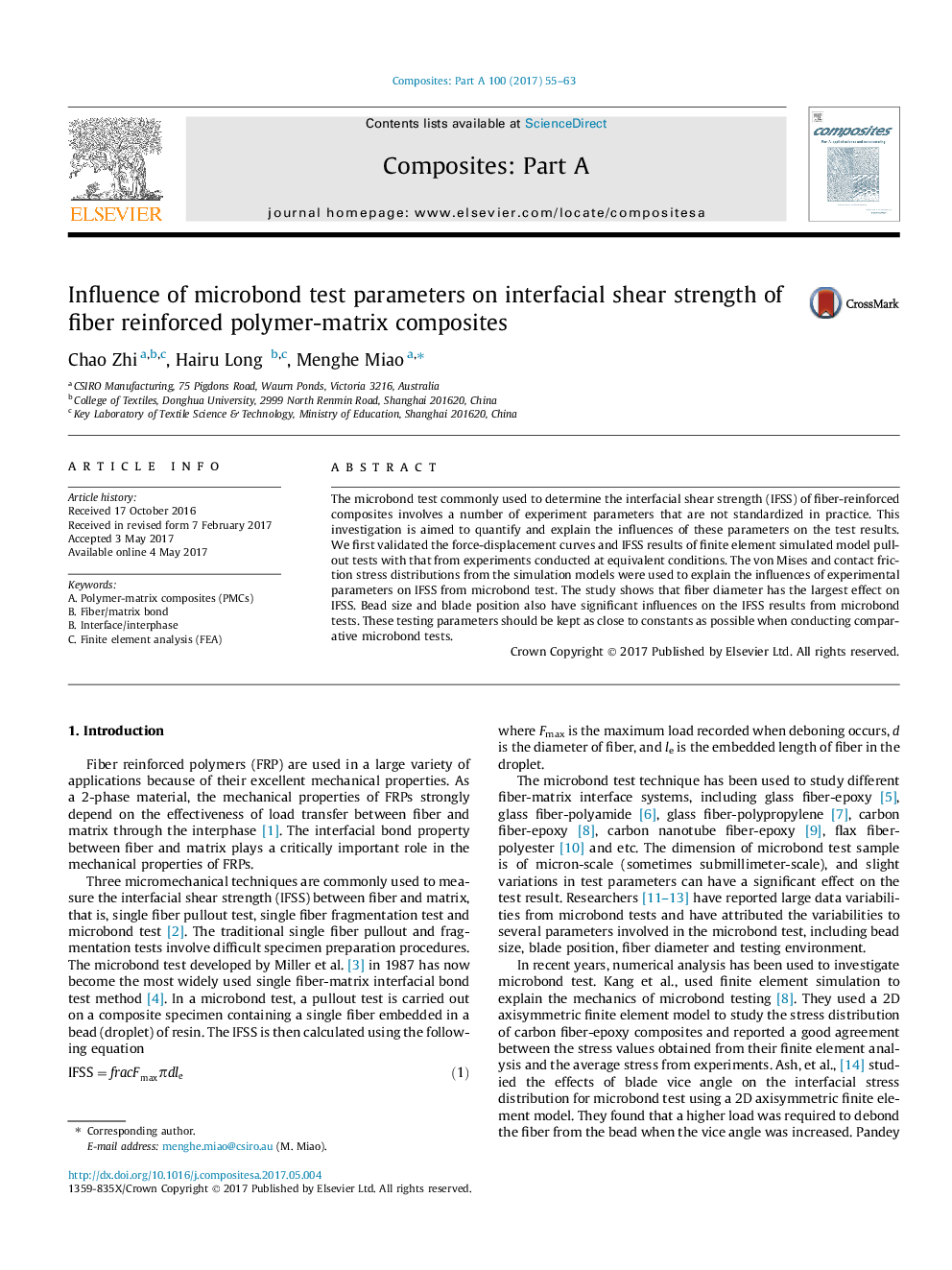| Article ID | Journal | Published Year | Pages | File Type |
|---|---|---|---|---|
| 5439490 | Composites Part A: Applied Science and Manufacturing | 2017 | 9 Pages |
Abstract
The microbond test commonly used to determine the interfacial shear strength (IFSS) of fiber-reinforced composites involves a number of experiment parameters that are not standardized in practice. This investigation is aimed to quantify and explain the influences of these parameters on the test results. We first validated the force-displacement curves and IFSS results of finite element simulated model pullout tests with that from experiments conducted at equivalent conditions. The von Mises and contact friction stress distributions from the simulation models were used to explain the influences of experimental parameters on IFSS from microbond test. The study shows that fiber diameter has the largest effect on IFSS. Bead size and blade position also have significant influences on the IFSS results from microbond tests. These testing parameters should be kept as close to constants as possible when conducting comparative microbond tests.
Keywords
Related Topics
Physical Sciences and Engineering
Materials Science
Ceramics and Composites
Authors
Chao Zhi, Hairu Long, Menghe Miao,
